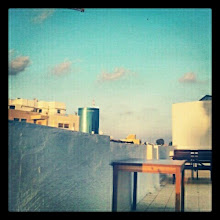21 April 2007
One of the purchases I made while in the States, which I previously mentioned, was a large stack of magazines. Among those purchased are what I would call “grooming” magazines. Yeah, I bought them, so what of it? Granted, they push a lifestyle that is bent on buying brand labels and looking one’s best.
You were expecting a counter-argument here?
While some of these magazines try to transcend materialism by writing about current events, some of them end up turning their columns into soapbox rants, with poorly developed arguments and nonexistent research. One of the magazines notorious for this type of writing, after an interview with Justin Timberlake and a spread of a man with slicked-back hair dressed in various Italian labels, decided to publish what reads as the intro of Michael Chabon’s forthcoming “The Yiddish Policemen’s Union.” Chabon is the same author who wrote “The Amazing Adventures of Kavalier & Clay,” the historical fiction novel that paralleled the origin of the comic book industry among Jews in the 1930’s.
The previewed pages spell out another dimension where there’s a Jewish states in Alaska, full of Ashkenazim who seem to have found familiar roots in the frozen tundra of North America. It reads like a combination of a season of Northern Exposure, an Isaac Bashevis Singer story, the Haaretz weekend section and numerous portrayals of Jews in American media, highbrow and lowbrow. While the average two hours of primetime American sitcoms probably contains a handful of Yiddish words popularized in popular culture over the course of a century, Chabon goes the extra mile in using terms and references that only Jews well-educated in their own history would know (e.g., “the big Litvak lady” at the “Polar-Shtern Kafeteria”). Even the setting in Alaska parallels the Jewish Autonomous Region in Siberia that Stalin set up in the hopes of solving “the Jewish question” through mass emigration to the other side of the USSR.
The chapter raises all sorts of issues, from usage of Yiddish or Hebrew as a Jewish lingua franca to Israel vs. Diaspora relations, written expertly by the author. After a few paragraphs of reading on a jetlag-induced narcoleptic afternoon, filled with streets named after Jewish thinkers and visions of a snow-covered shtetl with signage in English, I instinctively yelled out “WHAT THE...IS THIS DOING IN DETAILS MAGAZINE?!”
There are plenty of American Jews who have and do critique aspects of their identity in the mainstream media, much to the chagrin of the established Jewish community who becomes worried that these skeletons in the closet will be exploited by others or misunderstood by the vast majority out there otherwise unaware of the basics of Jewish identity, not to mention current issues and dilemmas. I tended to vaciliate between the two sides, usually based on whether or not I agreed with the the speaker. Living in the Jewish States, it's all viscerally academic.
I’m curious as to why a magazine such as this, otherwise hawking designers and high-end liquor, would not only choose to print literature but one so chock full of cultural essentialism. Is the readership of this magazine really the departments of Judaic Studies in top-tier colleges who swap advice over the latest in men’s fashion in between lectures on the Essenes?
I’m interested in seeing content of the May edition, even if it’s priced 400% more in Israel. In the meantime I’d suggest picking up a copy of Guilt & Pleasure. It may be funded by a mega-philanthropist, but it’s very insightful reading that’s meant to be discussed in a salon-style meeting and (hopefully) won't leave you itching to send a check to the ADL.
It’s finally getting warm here, taking a walk on Shabbat for the first time in a while on a nearby path past rosemary bushes so full of bees it sounded like the NASCAR race on TV you inadvertently flicked onto with the remote control.
The student strike continues on, and on the docket now are the ultimate in Israeli experiences: Memorial Day and Independence Day, 48 consecutive hours that fill the average Israeli with an extra helping of intense emotions. Teenagers have been selling Israeli flags with clips for cars all along the streets, with cars zipping by with at least one or two adorned flags. The local newspaper not only put out an official guide to all the memorial ceremonies and Independence Day celebrations, but published their list of the 100 most defining Blue and White concepts (even after last year’s Top 10 versions in the Haaretz and Yediot Ahronot papers, this is a must read for anyone looking for an understanding of Israeli society).
Here sales for coolers and beachwear are for Independence Day and never for Memorial Day, not like we do back in the States where we turn both into a moneymaker. Somehow the idea of a Memorial Day sale on grills and women’s clothes doesn’t fit into a country where the jury’s literally still out on the last war, not to mention practically everyone in this small country knowing someone who’s died in a war or terrorist attack (also included in the commemorations). That being said, tomorrow I’m hoping to buy a TV (at long last!) before the first of two nationwide sirens sound in the evening that announces the start of Memorial Day. I may not get cable installed for a few days' more, all I need in the meantime is a regular broadcast channel to watch the ceremony marking the end of Memorial Day and the beginning of Independence Day. Called "The Torch Lighting Ceremony," this ceremony annually broadcasted live from Har Herzl (the national military and political cemetery in Jerusalem) is the height of patriotism and nationalist kitsch. Think every patriotic symbol, performance and speech you've ever seen witnessed and then condensed into a square plaza.
More to come in the next few days.
22 April 2007
Subscribe to:
Post Comments (Atom)




No comments:
Post a Comment